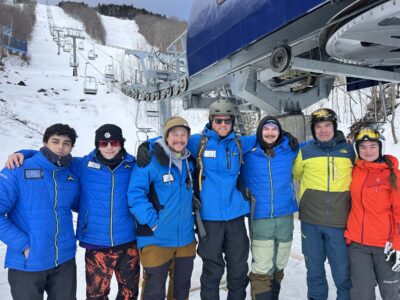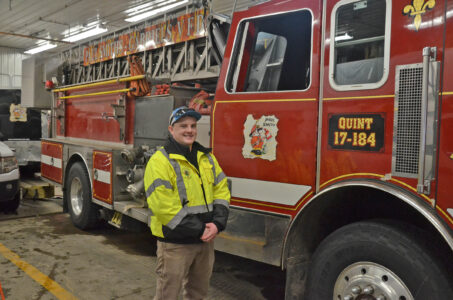Big changes to backcountry camping in Saranac Lakes Wild Forest
DEC plan would close some popular campsites, establish new ones, change group camping
- The DEC plans to close eight campsites along Floodwood Road near Saranac Inn, but would also build several new sites to offset the loss to the popular camping area. (Enterprise photo — Justin A. Levine)
- Floodwood Road campsite number 2 on the shore of Polliwog Pond would be permanently closed under a DEC plan for the Saranac Lakes Wild Forest. (Enterprise photo — Justin A. Levine)

The DEC plans to close eight campsites along Floodwood Road near Saranac Inn, but would also build several new sites to offset the loss to the popular camping area. (Enterprise photo — Justin A. Levine)
SARANAC LAKE — The state Department of Environmental Conservation’s recently released unit management plan for much of the state land around the Tri-Lakes calls for sweeping changes to some popular camping areas. The plan also calls for opening new campsites to offset the closure of others.
One of the biggest changes to the Saranac Lakes Wild Forest is how the state would administer group camping sites. State law says no more than eight people can camp at a backcountry site, but the law also allows campsites for larger groups.
Only one state-run campground is addressed in the plan, but changes would hit popular camping areas such as Floodwood Road near Saranac Inn and Little Green Pond near the DEC fish hatchery in Lake Clear.
The UMP, which was released about a dozen years after the state took public comments on the plan, encompasses state lands from Tupper Lake to Lake Placid, and butts up against other state management areas such as the High Peaks and St. Regis Canoe area.
Wild forest land designation is less restrictive than wilderness or primitive areas, but the DEC’s plan addresses several issues regarding spacing, waste disposal and setback restrictions in regard to many of the campsite changes.

Floodwood Road campsite number 2 on the shore of Polliwog Pond would be permanently closed under a DEC plan for the Saranac Lakes Wild Forest. (Enterprise photo — Justin A. Levine)
The DEC operates public campgrounds throughout the Adirondacks and also offers individual campsites that are used on a first-come, first-served basis. These campsites are free of charge and only require a permit if staying for an extended period of time.
While there are hundreds of these sites around the park, some are accessible by vehicle and others are only accessible via boat or on foot.
–
Group camping
–
There will be serious changes to way group camping is done in the wild forest if the UMP goes forward as proposed. There will be 15 sites designated for group camping, but groups will now be required to have a permit, and only 12 people will be allowed per site.
In addition to the limit, any group sites will be at least a mile apart.
“This will be a major change in how group camping is administered,” the DEC wrote in a fact sheet that was issued along with the UMP. “Large camping groups will face significant difficulties in utilizing the SLWF and may have to change travel plans.
“The current demand for the group sites will exceed the number of sites available.”
–
Roadside camping
–
Perhaps the most popular area addressed in the plan will also see the biggest changes.
Floodwood Road, which borders the St. Regis Canoe Area, is home to nearly two dozen drive-up campsites, and the DEC proposal would close eight of them permanently. However, the UMP also calls for the construction of seven new sites along the road that would meet spacing requirements and be screened from the road. Four of those new sites would also be accessible according to Americans with Disabilities Act standards.
A few of the sites to be closed include site number 6, which is on the offshore side of the road, and sites 7 and 8, where the outhouses are located across the street to meet setback standards. Sites 1 and 2 currently share a long driveway, but motor vehicles are prohibited from driving all the way to the sites. The UMP calls for site 2 and the driveway to be closed, meaning that site 1 will still be usable, but will require a short walk in from Floodwood Road.
Another popular camping spot is Little Green Pond, which can be accessed off of Fish Hatchery Road in Lake Clear.
There, the DEC would close six campsites while retaining three. Two of the sites, which are located in the Canoe Area, will be designated as walk-in only.
Another access point to the Canoe Area is Hoel Pond, where there is a car-top boat launch and four campsites. The DEC would close three of the sites and prevent driving to the lone site that remains open. This is just part of a plan for the Hoel Pond area, which also includes extensive upgrades to the car-top launch.
To offset the loss of campsites in the above areas, the DEC is proposing to build six new campsites in the Lake Clear area: along Forest Home Road, state routes 30 and 186, and Beaverwood and Rat Pond roads.
–
Primitive sites
–
The UMP has extensive plans for dozens of other campsites as well. Follensby Clear Pond would see major changes under the plan, which calls for the closure of 17 sites plus a lean-to. One new site would be built, but the DEC says that the reduction in sites is needed to meet separation guidelines, which call for sites to be about a quarter-mile apart.
The Coreys Road near Tupper Lake would see two new sites built to replace others that have been closed recently, while five sites would be closed on Polliwog Pond. One new site will be built there, as will a new site on Rollins Pond.
The state also plans to add a significant number of sites to other locations, such as 11 new sites on Upper Saranac Lake and two sites on the St. Regis River near Lower St. Regis Lake.
For a full listing of the proposed camping changes, as well as the full text of the UMP, go to www.dec.ny.gov/lands/22593.html. Comments will be accepted on the proposed changes until Aug. 11.





